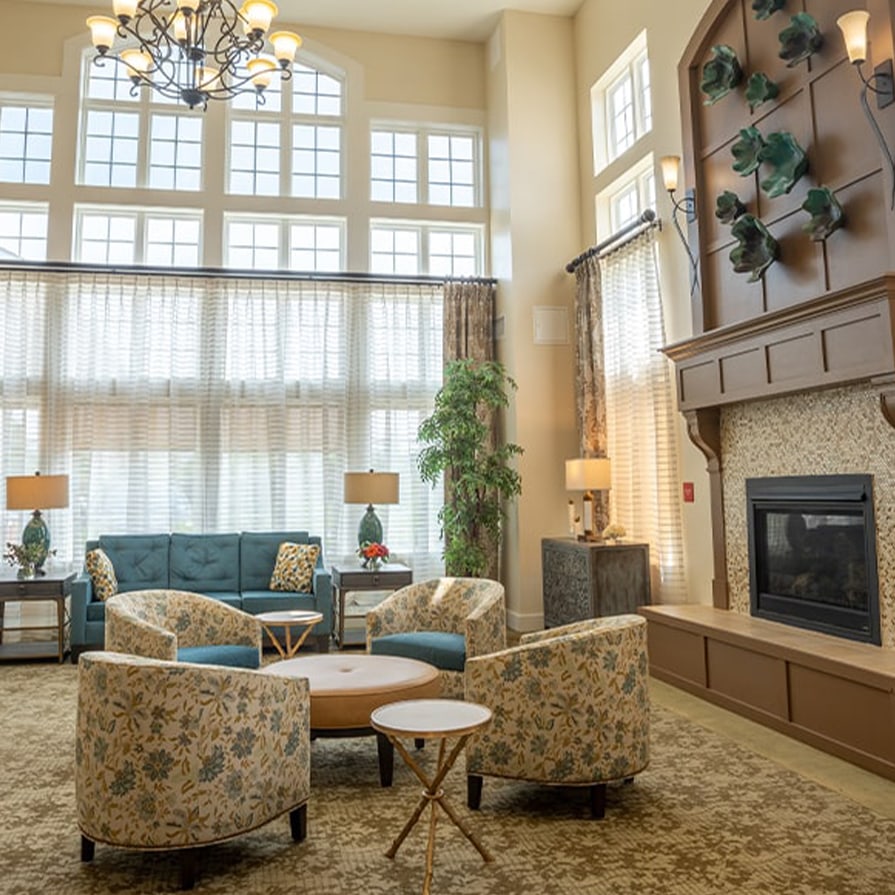Caring for a parent with dementia isn’t always black and white. Among the many questions that arise, one of the most common is how frequently you should visit. The answer isn’t one-size-fits-all and requires thoughtful consideration of various factors.
Several aspects are important to keep in mind as you work to create a visitation plan that supports both you and your loved one. These include:
- Understanding dementia
- Considering external influences
- Being flexible to changes in their condition
- Leveraging technology
- Setting achievable expectations
- Focusing on the quality rather than the quantity of visits
Understanding Dementia
Understanding dementia involves recognizing it as a broad term used to describe a range of symptoms associated with a decline in memory, reasoning, and other thinking skills severe enough to interfere with daily life. It is caused by various diseases and injuries that primarily or secondarily affect the brain, such as Alzheimer’s disease or stroke.
Key Characteristics of Dementia
Depending on the specific type of dementia, the characteristics can differ and may include the following:
- Memory Loss: Difficulty remembering recent events, conversations, and names is often one of the first signs.
- Cognitive Impairment: Problems with problem-solving, language, and understanding visual information.
- Mood Changes: Including swings and changes in personality, depression, anxiety, and inappropriate behavior.
- Difficulty Completing Familiar Tasks: Struggling with daily activities like dressing or handling finances.
Causes of Dementia
While Alzheimer’s is the most common cause of dementia, other conditions can also result in similar symptoms:
- Vascular dementia, due to mini-strokes or changes in blood supply to the brain.
- Lewy body dementia, associated with abnormal protein deposits in the brain.
- Frontotemporal dementia, relating to damage to neurons in the frontal and temporal lobes of the brain.
Diagnosis & Treatment
There’s no single test for dementia. Doctors diagnose it based on medical history, physical examinations, laboratory tests, and characteristics of the symptoms. While there is currently no cure for most types of dementia, some treatments can help manage symptoms. These can include medications, lifestyle changes, and supportive therapies that can improve quality of life.
Considering External Influences
Finding the right balance between your life and visiting a loved one can be challenging. The distance to their home, along with your job and family duties all affect how often you can visit. It’s important to create a visit schedule that is practical for you and isn’t overwhelming.
The key is to have a manageable routine that allows for regular visits. This could mean choosing certain days or times for visits that fit into your life smoothly.
It’s also crucial to think about what your loved one needs. Visiting them regularly can make a big difference in their life by providing support and keeping them connected with the outside world. Yet, it’s necessary to make sure your visits fit well with their routine and schedule.
Communicating openly with the care community can help you figure out the best visiting times.
Being Flexible to Changes in Their Condition
As memory loss progresses, the needs and preferences of your loved one will likely change. This means that what works for them now regarding care, activities, and even how they communicate may differ later.
Understanding these shifts is important for tailoring your visits to be as beneficial and enjoyable as possible for your loved one. For instance, if they become more sensitive to busy environments, you might choose to visit during quieter times. Or, if they develop a fondness for a particular activity or type of music, you can incorporate these into your time together.
Leveraging Technology
Technology can help bridge the gap between families and their loved ones residing in memory care communities, especially when face-to-face visits are challenging. The advent of digital communication tools has significantly expanded the ways we can maintain meaningful connections, ensuring that distance or health precautions do not lead to isolation or a sense of disconnection.
But that’s not where the power of technology stops. It can also help in:
Advancing Diagnosis & Assessment
One of the most promising areas where technology can make a significant impact is in the early diagnosis and comprehensive assessment of dementia. Cutting-edge tools and algorithms are available, capable of detecting subtle cognitive changes much earlier than traditional methods.
These technologies could lead to more timely interventions, potentially altering the course of dementia for countless individuals.
Transforming Care Delivery
Technology’s role extends beyond diagnosis into the very way care is delivered. From telehealth platforms enabling remote consultations and monitoring to cognitive stimulation tools that engage and exercise the brain, these innovations promise a more personalized and effective approach to care.
Supporting Aging in Place
Perhaps one of the most impactful uses of technology is to support aging in place. Innovative solutions like smart home systems, wearable devices, and GPS tracking all provide a safer environment for individuals with dementia. These technologies promote independence and offer peace of mind to families and caregivers.
Setting Achievable Expectations
If choosing to reside in a memory care community, it marks a significant departure from the familiarity of home life and may pose certain challenges as residents get used to new routines and settings.
To smooth this transition, more regular visits could be beneficial initially. Nonetheless, it’s important to carefully observe the impact of these visits on their sense of consistency and make adjustments as needed.
Focusing on the Quality Rather than the Quantity of Visits
The quality of visits should significantly outweigh the quantity. Focusing on creating meaningful, enjoyable, and comfortable interactions that respect your parent’s preferences, abilities, and timing can significantly impact their overall well-being.
By prioritizing these aspects, caregivers and loved ones can offer support that truly makes a difference, fostering a sense of connection and joy amidst the challenges of dementia.
Nurturing Connections While Prioritizing Self-Care
Visiting a parent with dementia requires careful consideration of various factors, including an understanding of dementia, caregiver support, personal responsibilities, and your parent’s preferences.
Finding a balance that meets your parent’s needs while prioritizing your well-being is essential. By communicating openly, scheduling visits thoughtfully, and seeking support when needed, you can navigate this journey with compassion and resilience.
At Juniper Village at Aurora, we’re committed to providing premier care for your loved one. Book a visit now to see how our nurturing community can support your family.







